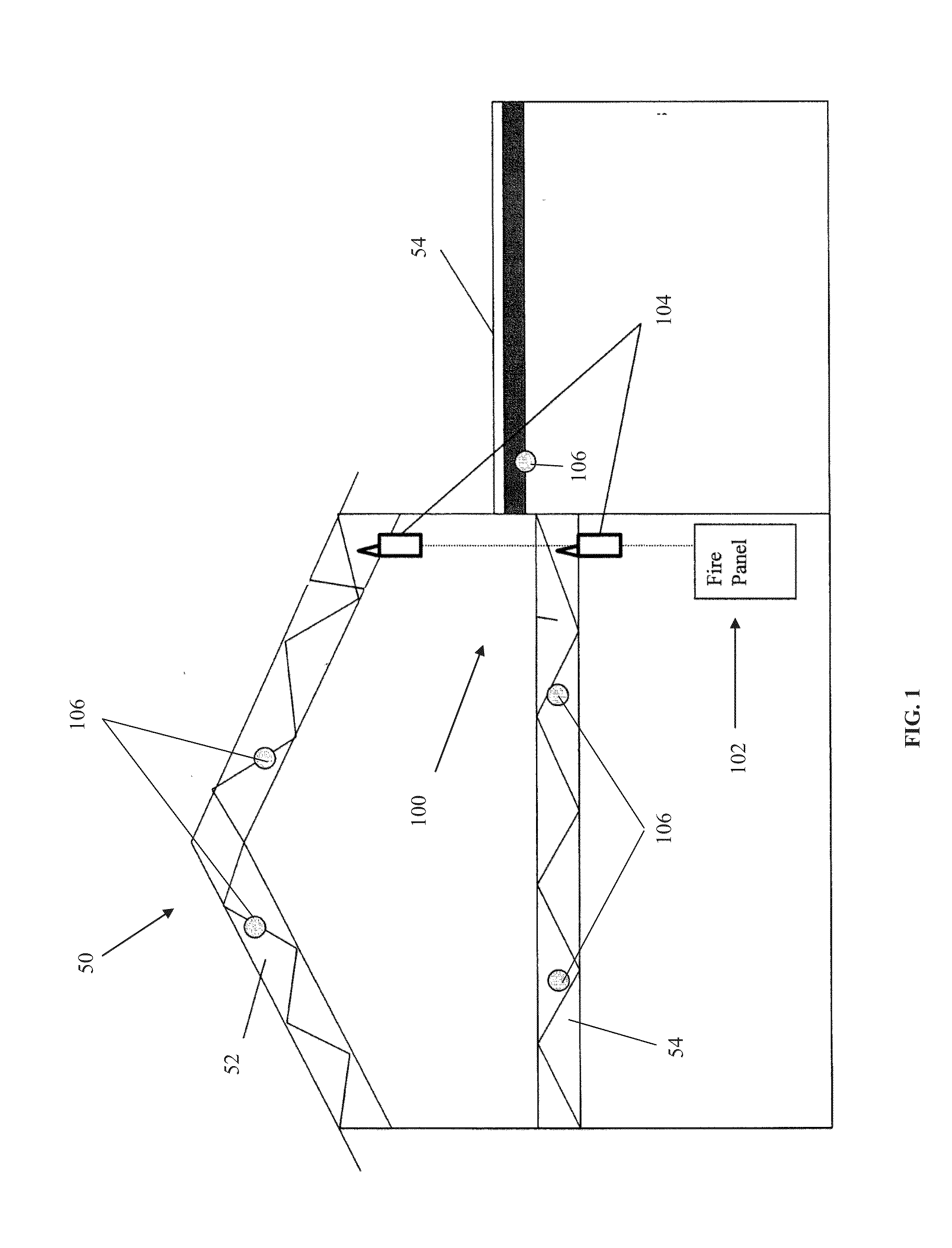System and method for wireless heat detection
- Summary
- Abstract
- Description
- Claims
- Application Information
AI Technical Summary
Benefits of technology
Problems solved by technology
Method used
Image
Examples
Embodiment Construction
[0019]A system and method are disclosed for enabling early detection of fires in buildings. The system and method can also be used to detect high heat conditions that occur prior to a fire condition (i.e., prior to ignition temperature of an associated structure). The system and method can further be used to predict failure of structural members in buildings that are subject to high heat conditions during a fire. A plurality of sensors can be disposed at a variety of locations on building structural members. The sensors may be configured to convert energy from heat (i.e., fire) to wireless signals that can be received by an antenna associated with a communication module. The antenna and communication module can transmit the received information to a fire panel, which notifies operators and building occupants that structural elements of a building are being subjected to high heat conditions.
[0020]FIG. 1 shows a building 50 including an exemplary alert system 100. Generally, the syste...
PUM
 Login to View More
Login to View More Abstract
Description
Claims
Application Information
 Login to View More
Login to View More - R&D
- Intellectual Property
- Life Sciences
- Materials
- Tech Scout
- Unparalleled Data Quality
- Higher Quality Content
- 60% Fewer Hallucinations
Browse by: Latest US Patents, China's latest patents, Technical Efficacy Thesaurus, Application Domain, Technology Topic, Popular Technical Reports.
© 2025 PatSnap. All rights reserved.Legal|Privacy policy|Modern Slavery Act Transparency Statement|Sitemap|About US| Contact US: help@patsnap.com



